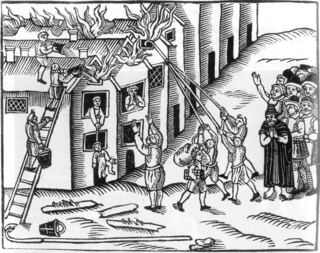Other years |
| Countries of the United Kingdom |
| Scotland |
| Sport |
| 1731 English cricket season |
Events from the year 1731 in Great Britain .
Other years |
| Countries of the United Kingdom |
| Scotland |
| Sport |
| 1731 English cricket season |
Events from the year 1731 in Great Britain .

Henry Fielding was an English writer and magistrate known for the use of humour and satire in his works. His 1749 comic novel The History of Tom Jones, a Foundling was a seminal work in the genre. Along with Samuel Richardson, Fielding is seen as the founder of the traditional English novel. He also played an important role in the history of law enforcement in the United Kingdom, using his authority as a magistrate to found the Bow Street Runners, London's first professional police force.
The 1730s decade ran from January 1, 1730, to December 31, 1739.

1731 (MDCCXXXI) was a common year starting on Monday of the Gregorian calendar and a common year starting on Friday of the Julian calendar, the 1731st year of the Common Era (CE) and Anno Domini (AD) designations, the 731st year of the 2nd millennium, the 31st year of the 18th century, and the 2nd year of the 1730s decade. As of the start of 1731, the Gregorian calendar was 11 days ahead of the Julian calendar, which remained in localized use until 1923.

Robert Walpole, 1st Earl of Orford,, known between 1725 and 1742 as Sir Robert Walpole, was a British Whig politician who served as Prime Minister of Great Britain from 1721 to 1742. He also served as First Lord of the Treasury, Chancellor of the Exchequer, and Leader of the House of Commons, and is generally regarded as the de facto first prime minister of Great Britain.

Philip Wharton, 1st Duke of Wharton PC was an English peer and Jacobite politician who was one of the few people in the history of England, and the first since the 15th century, to have been raised to a dukedom whilst still a minor and not closely related to the monarch.
Events from the year 1808 in the United Kingdom.
Events from the year 1738 in Great Britain.
Events from the year 1859 in the United Kingdom.
Events from the year 1735 in Great Britain.
Events from the year 1724 in Great Britain.

John and William Bastard were British surveyor-architects, and civic dignitaries of the town of Blandford Forum in Dorset. John and William generally worked together and are known as the "Bastard brothers". They were builders, furniture makers, ecclesiastical carvers and experts at plasterwork, but are most notable for their rebuilding work at Blandford Forum following a large fire of 1731, and for work in the neighbourhood that Colvin describes as "mostly designed in a vernacular baroque style of considerable merit though of no great sophistication.". Their work was chiefly inspired by the buildings of Wren, Archer and Gibbs. Thus the Bastards' architecture was retrospective and did not follow the ideals of the more austere Palladianism which by the 1730s was highly popular in England.
Events from the year 1730 in Great Britain.
Events from the year 1701 in England.
Events from the year 1723 in Great Britain.
Events from the year 1739 in Great Britain.
Events from the year 1740 in Great Britain.
Events from the year 1741 in Great Britain.
Events from the year 1742 in Great Britain.
Events from the year 1676 in England.

The Tiverton fire of 1731, also known as the Great Fire, was a fire that affected part of Tiverton, Devon in England on 5 June 1731. It was one of a number of serious fires affecting the town in the 17th and 18th centuries. Breaking out in a baker's house in Gold Street, the fire spread rapidly due to the prevalence of straw-thatched roofs in the town. In total 298 houses were destroyed in the fire which caused damage to the value of an estimated £58,976 14s. 9d. In response to the fire, a number of benefactors came forward to assist Tiverton in rebuilding. The fire resulted in the introduction of legislation that attempted to prevent a similar incident happening in the future.